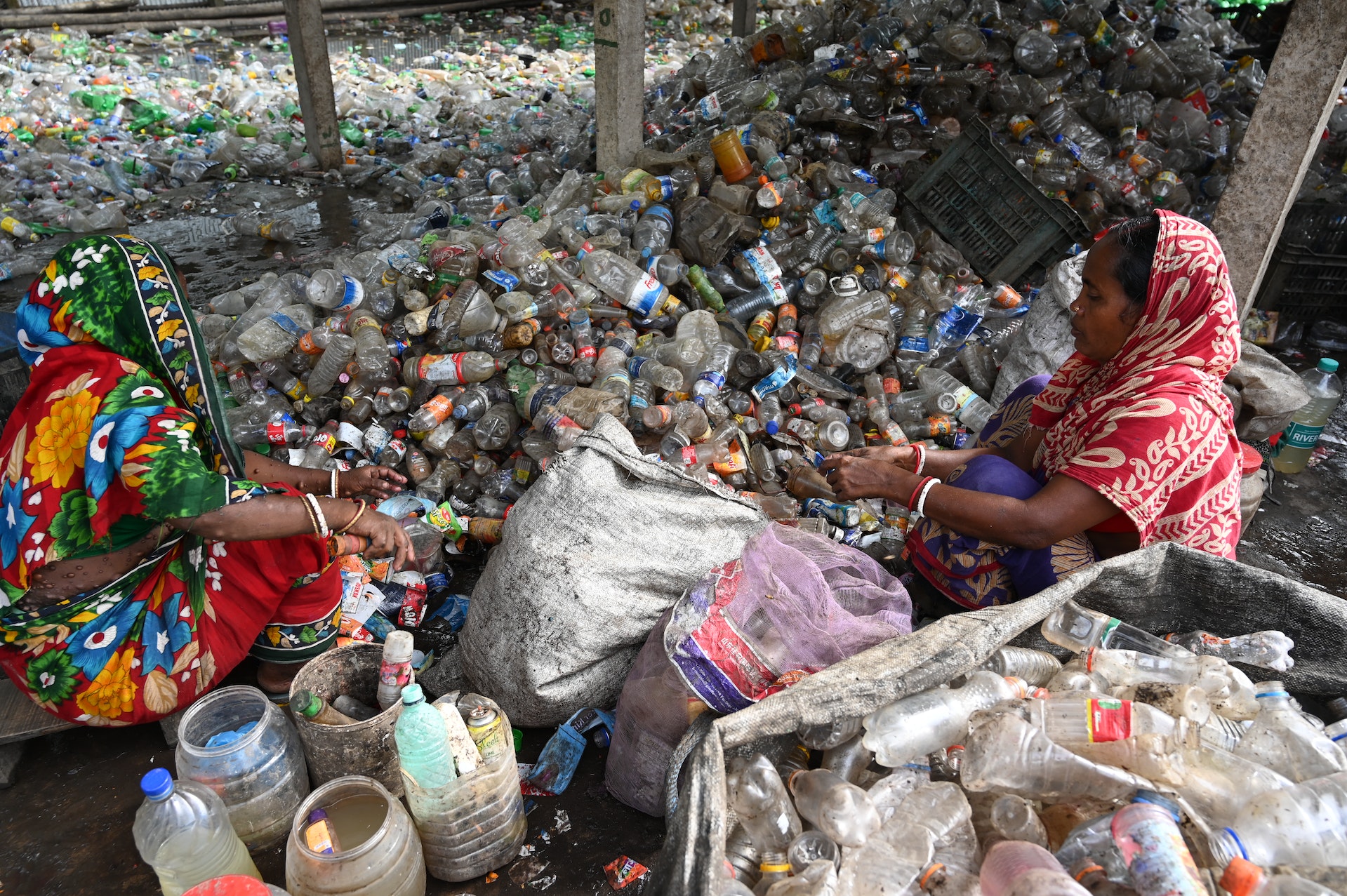Better Childcare Can Help Reduce Child Poverty
A recent report by Child Trends delved into the fascinating story behind the dramatic 59% decrease in child poverty in the U.S. over the last 25 years. It explored the complex interplay of policy, demographic, and economic factors that may have contributed to this impressive decline.
Author:Mia ThompsonReviewer:Calvin PenwellMar 30, 2023111 Shares2.1K Views

A recent report by Child Trends delved into the fascinating story behind the dramatic 59% decrease in child poverty in the U.S. over the last 25 years. It explored the complex interplay of policy, demographic, and economic factors that may have contributed to this impressive decline.
However, it's important to remember that poverty can have incredibly detrimental effects on young children, who require access to vital resources during crucial stages of early development. According toForbes Magazine, poverty can hinder a child's education and future academic success long before they go to school.
The Plight of Young Children from Minority Families
In 2021, 18% of children under 5 in the U.S. lived in poverty. But young children's growth and development demand more than just basic needs; they need stable and loving caregivers, positive experiences, and access to healthcare and nutrition. Sadly, poverty can make all of this tough to come by, in part due to families dealing with stress, lack of resources and opportunities, and unsafe housing.
Further, it's not just any child that's affected. Poverty hits young children of color the hardest, with Native American and Black infant poverty rates being twice as high as the national average. To truly tackle child poverty, we must address the systemic and historical racism that holds back families of color from wealth and stability opportunities.
Low Unemployment = More Opportunities for Single Moms, but…
When unemployment rates drop, and more single mothers enter the workforce, child poverty rates can decrease. But, without access to paid family or sick leave, parents struggle to balance work and taking care of their young children's needs.
The sad fact is that only a small number of states offer paid family leave, and even fewer require employers to provide paid sick days when a child is ill. This lack of support hits low-wage orhourly workersthe hardest, with as many as 93% having no access to paid family leave.
Quality early education and childcare (ECE) is another crucial piece of the puzzle in helping parents work, learn, and stay employed. However, many challenges, like the cost and availability of ECE, particularly during therecent pandemic, make it inaccessible to many families.
It’s not just about having enough options; it's also about making sure that the choices available align with families' financial capabilities and needs. The high cost of childcare is a huge barrier for many families, as thecurrent funding optionsfall short of covering it. For low-income parents, work schedules often don't align with traditional ECE hours, making it difficult to access care that fits their needs.
Meanwhile, the more feasible solution to reducing child poverty could be more achievable than you think: provide better, more affordable childcare!
Better, More Affordable Childcare: The Key to Curbing Child Poverty
Off the back of the information above, it’s clear as day that lack of access to quality care of their children can be one of the barriers that limit mothers' opportunities to work, ultimately trapping them and their children in poverty. Policies to expand access to affordable, quality childcare can be a powerful tool in the fight against child poverty.
Working and Earning
One of the most significant barriers to economic mobility for low-income families is the lack of affordable and high-quality childcare. Without it, parents may find it challenging to pursue employment opportunities, let alone increase their earning potential.
Better, more accessible childcare can help break down this barrier by enabling parents to work and earn a steady income, which can have a direct impact on reducing child poverty by increasing family income.
More crucially, childcare can play a critical role in helping to reduce child poverty by enabling single parents (particularly single mothers) to work and earn an income. Without affordable and reliable childcare, parents, especially single-parent households, may be unable to hold down a job or work the hours necessary to lift their families out of poverty.
Providing affordable, quality childcare can allow parents to work longer hours and increase their earning potential. Additionally, when parents are able to work and support their children, it helps reduce the dependence on government assistance programs, which can also help reduce poverty rates across the board.
Investing in the Future
High-quality, accessible childcare can do more than just provide a temporary solution to financial struggles; it can also play a critical role in helping to break the intergenerational cycle of poverty.
Investing in high-quality early childhood education programs is vital to this strategy. Programs provided through daycare centers, for example, can positively impact a child's cognitive and social development. These early childhood education programs can give children a strong foundation and set them on a path to future success.
They can also have a powerful impact on a child's future educational and economic outcomes. Studies have shown that children who attend high-quality early childhood education programs are more likely to graduate from high school, attend college, and have higher lifetime earning potential.
Furthermore, early childhood education programs can improve social-emotional skills, such as self-regulation, empathy, and motivation that are essential for success in school and later in life. Therefore, investing in better child care and ECE not only provides immediate benefits to children and their families, but can also lay the foundation for a more equitable and prosperous future for society as a whole.
Breaking the Bank
While childcare benefits are clear, the cost can often be a barrier for low-income families. Childcare expenses can consume a significant portion of a family's budget, making it difficult to afford other necessities. Providing support for low-income families through subsidies for childcare can reduce the financial burden associated with childcare, and make it more affordable for families.
Closing the Achievement Gap
Childcare also plays a vital role in the overall development and educational growth of kids from low-income families. By providing a safe and stimulating environment, childcare centers and programs can help close the achievement gap and prepare children for school. It can also expose children to opportunities and experiences of which they may not otherwise have access.
Supporting the Caregivers: The Importance of Investing in the Early Childhood Workforce
It's not just about providing childcare; it's about investing in the people who make it possible, as well. Well-trained, caring, and passionate professional teams often run the best childcare and daycare facilities.
Unfortunately, this predominantly female workforce is underpaid and lacks opportunities for advancement. It’s no wonder that the childcare sector is facing one of theworst staffing crisesin the country's history. Even worse, this leads to high employee turnover, limiting access to high-quality early care and education for children and families – especially those living in poverty.
Early childhood education and childcare professionals also often struggle with their own financial and personal challenges, particularly during economic downturns and unforeseen crises like the recent COVID-19 pandemic.
Now, more than ever, we need to focus on innovative ways to recruit, retain and fairly compensate these essential workers. The federal government, states, and other stakeholders need to support the early childhood workforce – the educators, support staff and other service providers who help young children and their families succeed.
Wrap-Up
Investing in childcare is not just about giving parents a break. It's also about giving children and families the best chance to break free from the cycle of poverty and gain access to opportunities to succeed in life. Affordable, high-quality childcare services offered by accessible daycare centers could significantly reduce child poverty.
About Author

Mia Thompson
Author
Mia Thompson is a versatile writer at Kansas Press, delving into a range of topics including news, spiritual exploration, astrology, and numerology. With a passion for delivering insightful and informative content, Mia's articles provide readers with valuable perspectives and thought-provoking insights into these intriguing subjects.
She is dedicated to creating content that resonates with readers and fosters a deeper understanding of complex topics.

Calvin Penwell
Reviewer
Since diving into numerology in 1997, my path has been marked by extraordinary encounters and insights. A pivotal moment was uncovering a forgotten numerological manuscript in a tucked-away Italian library, which deepened my connection to the ancient wisdom of numbers. Another transformative experience was a meditation retreat in Nepal's tranquil mountains, where I honed my intuition and the art of interpreting numerical vibrations.
These adventures have not only enriched my numerological practice but also my ability to guide others towards understanding their destiny and life's purpose. My approach is deeply personal, rooted in a blend of historical knowledge and intuitive insight, aimed at helping individuals find their alignment with the universe's abundant energies. My mission is simple: to share the power of numerology in illuminating paths to abundance and fulfillment.
Latest Articles
Popular Articles